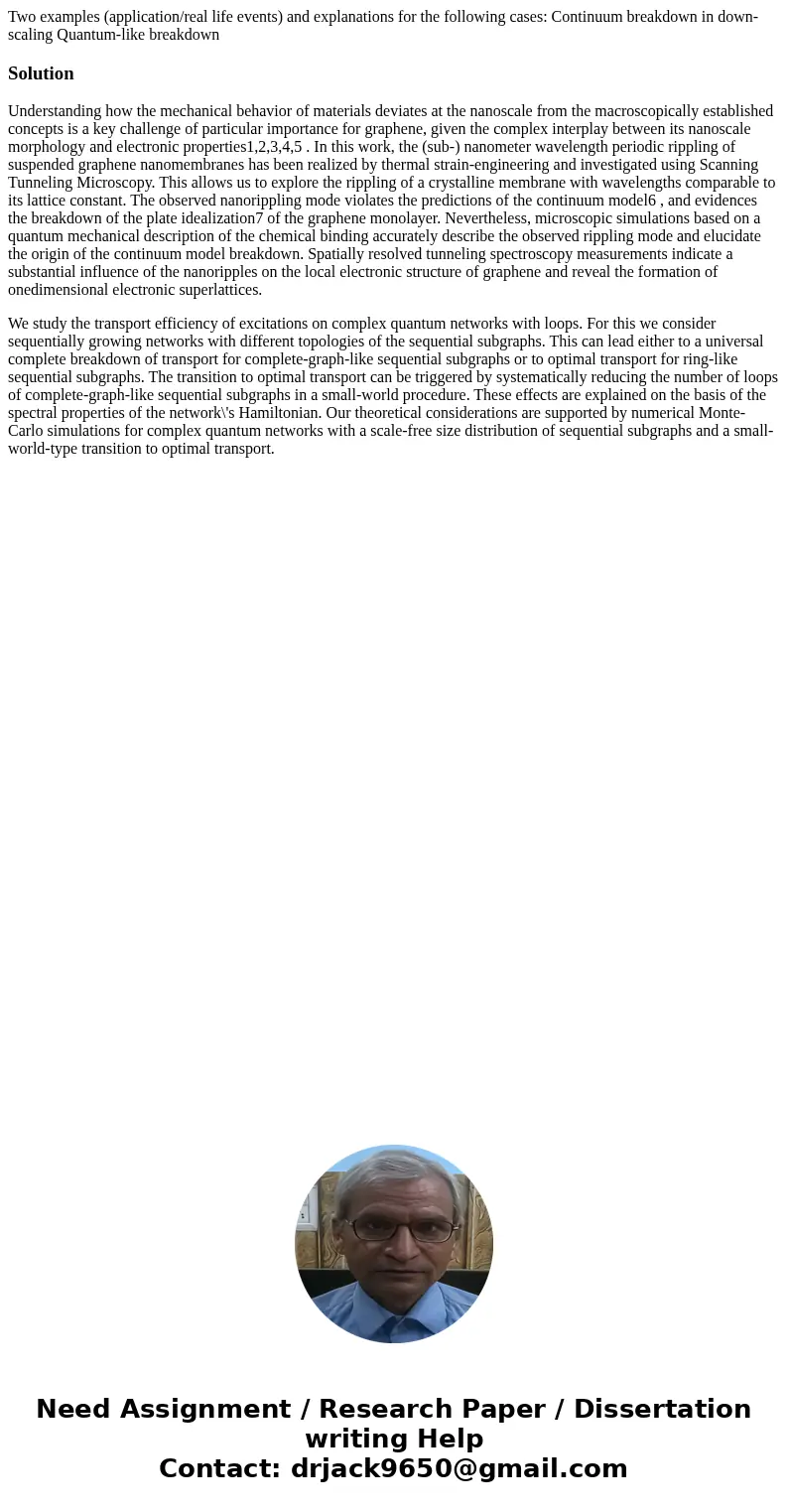Two examples applicationreal life events and explanations fo
Solution
Understanding how the mechanical behavior of materials deviates at the nanoscale from the macroscopically established concepts is a key challenge of particular importance for graphene, given the complex interplay between its nanoscale morphology and electronic properties1,2,3,4,5 . In this work, the (sub-) nanometer wavelength periodic rippling of suspended graphene nanomembranes has been realized by thermal strain-engineering and investigated using Scanning Tunneling Microscopy. This allows us to explore the rippling of a crystalline membrane with wavelengths comparable to its lattice constant. The observed nanorippling mode violates the predictions of the continuum model6 , and evidences the breakdown of the plate idealization7 of the graphene monolayer. Nevertheless, microscopic simulations based on a quantum mechanical description of the chemical binding accurately describe the observed rippling mode and elucidate the origin of the continuum model breakdown. Spatially resolved tunneling spectroscopy measurements indicate a substantial influence of the nanoripples on the local electronic structure of graphene and reveal the formation of onedimensional electronic superlattices.
We study the transport efficiency of excitations on complex quantum networks with loops. For this we consider sequentially growing networks with different topologies of the sequential subgraphs. This can lead either to a universal complete breakdown of transport for complete-graph-like sequential subgraphs or to optimal transport for ring-like sequential subgraphs. The transition to optimal transport can be triggered by systematically reducing the number of loops of complete-graph-like sequential subgraphs in a small-world procedure. These effects are explained on the basis of the spectral properties of the network\'s Hamiltonian. Our theoretical considerations are supported by numerical Monte-Carlo simulations for complex quantum networks with a scale-free size distribution of sequential subgraphs and a small-world-type transition to optimal transport.

 Homework Sourse
Homework Sourse